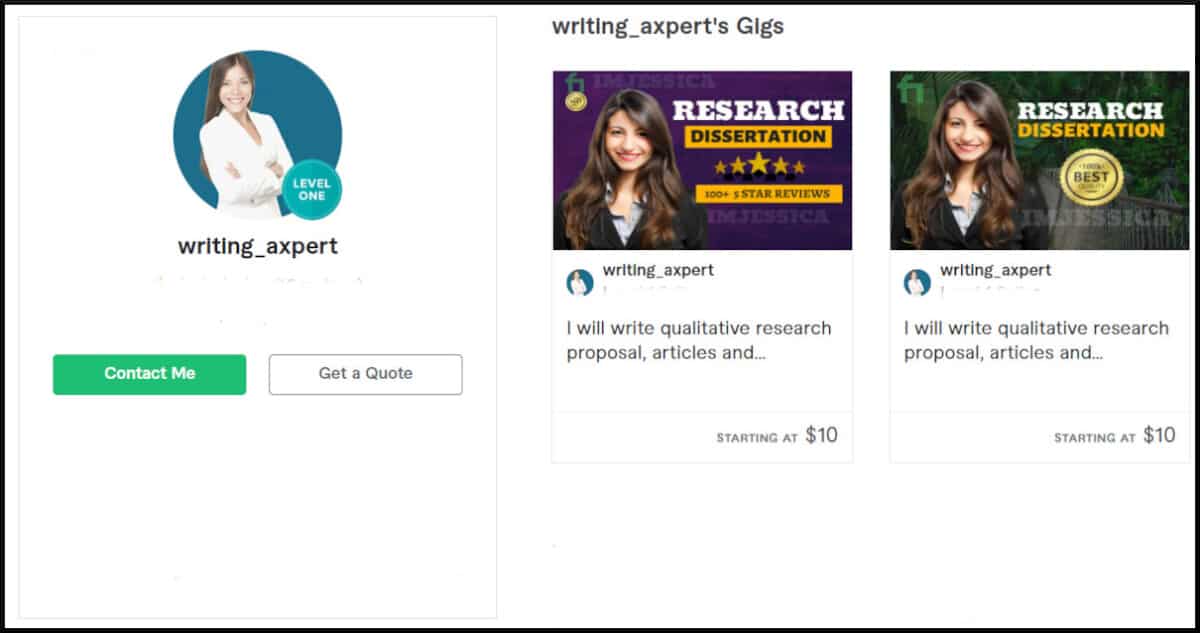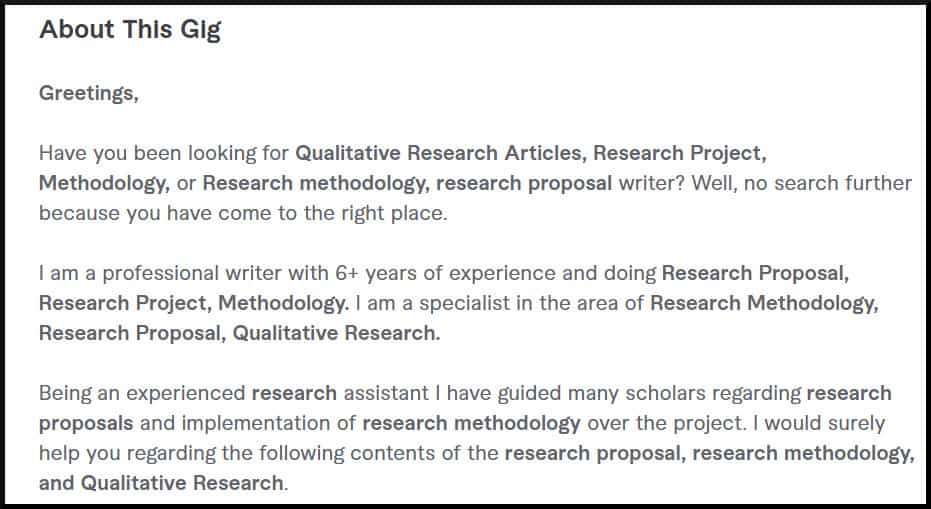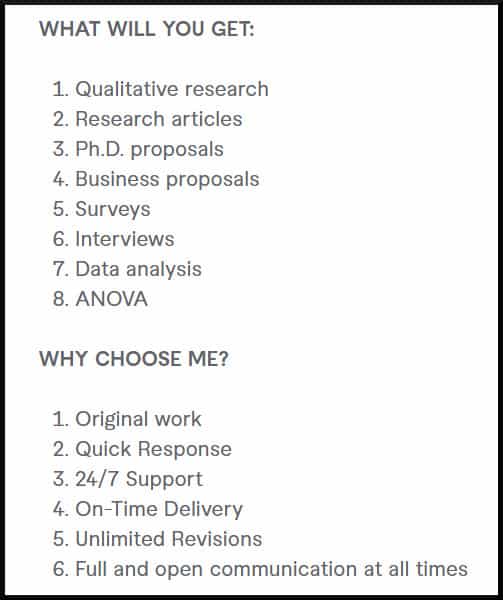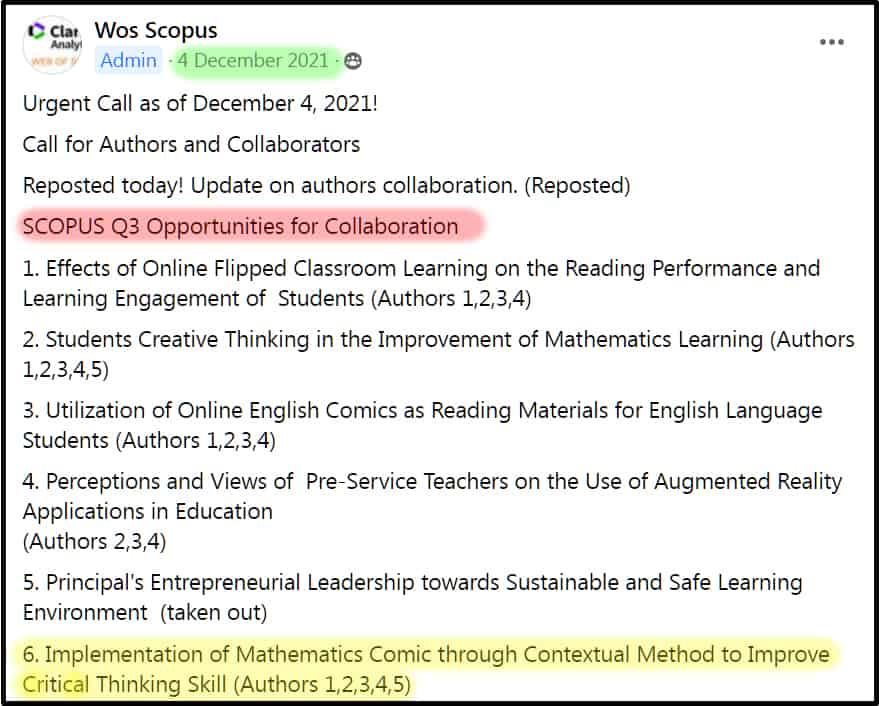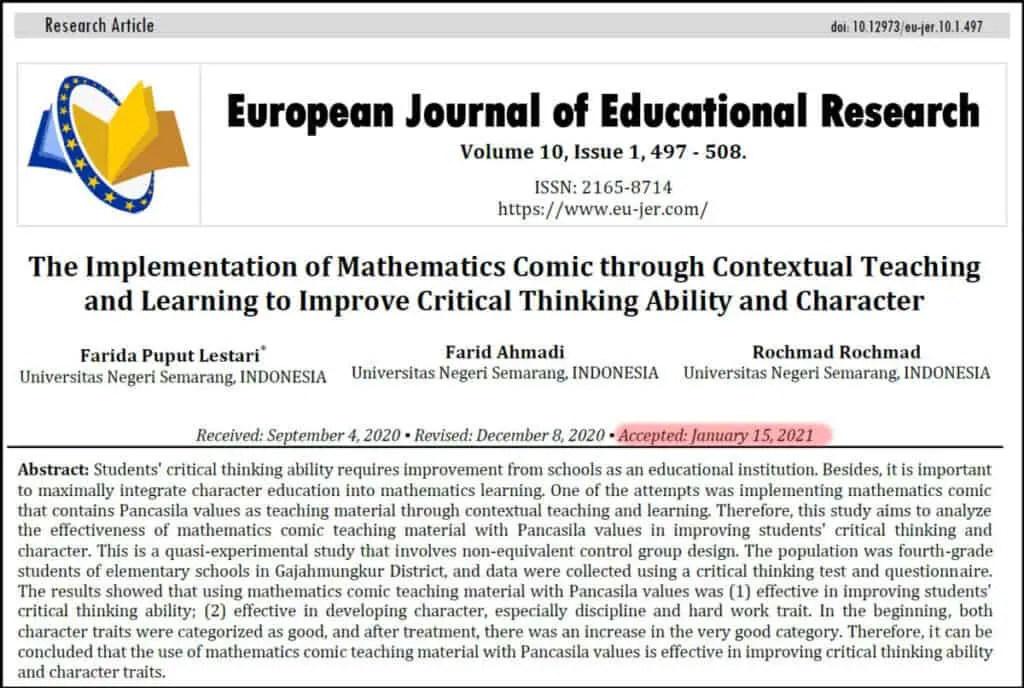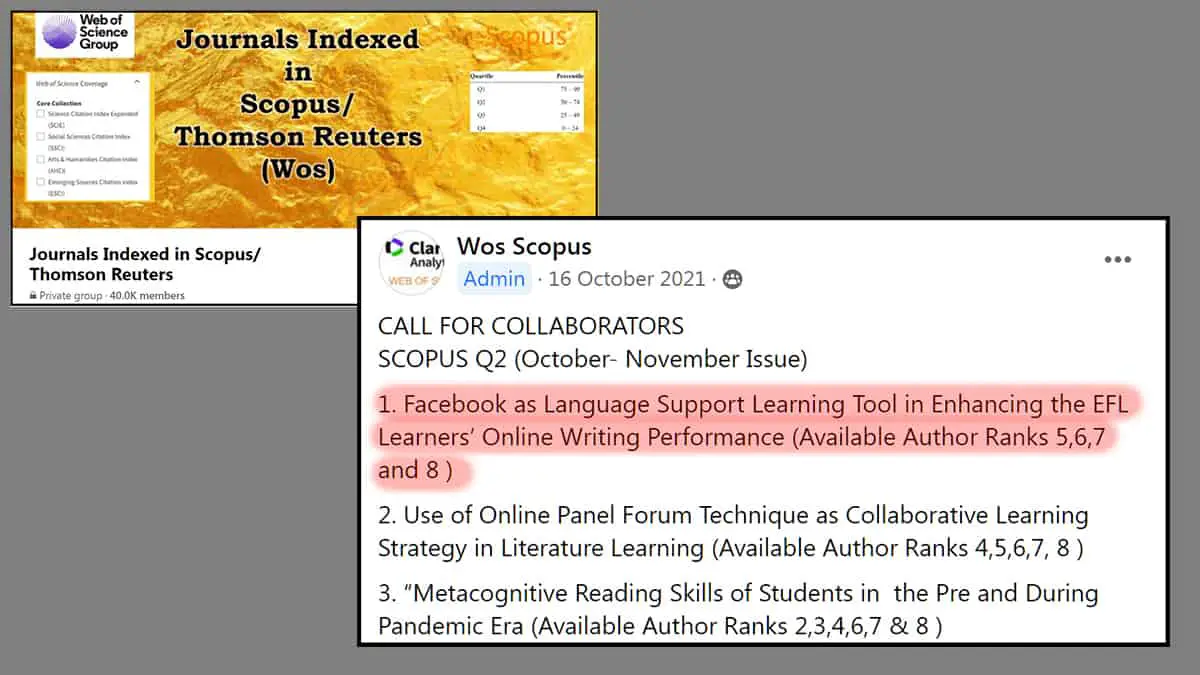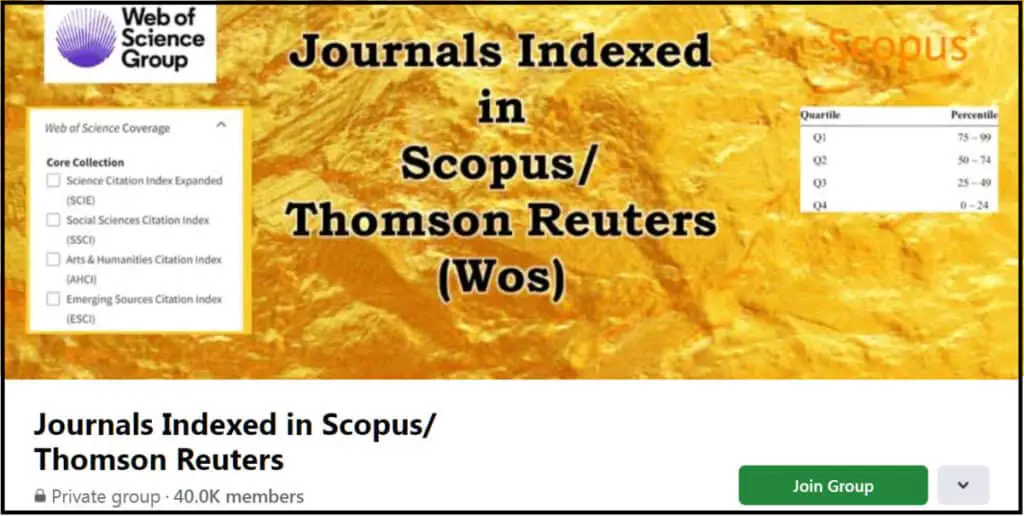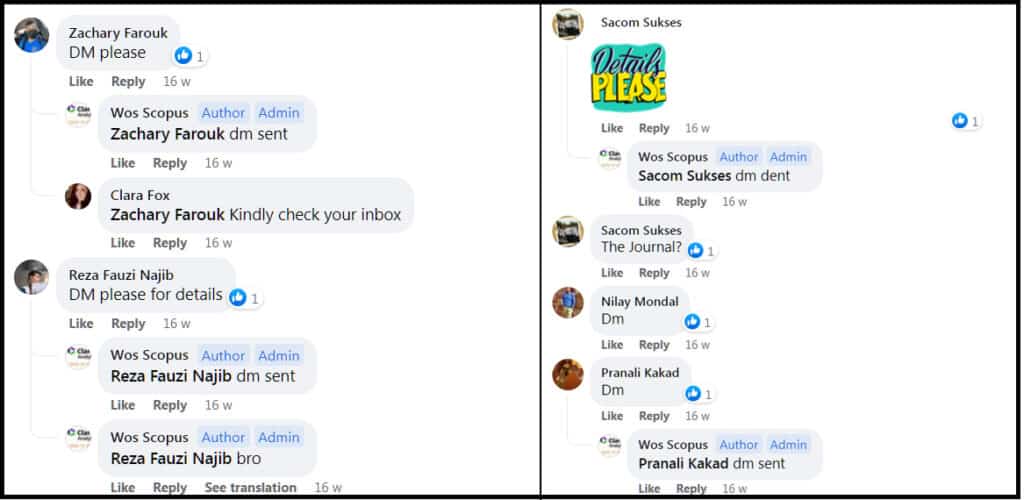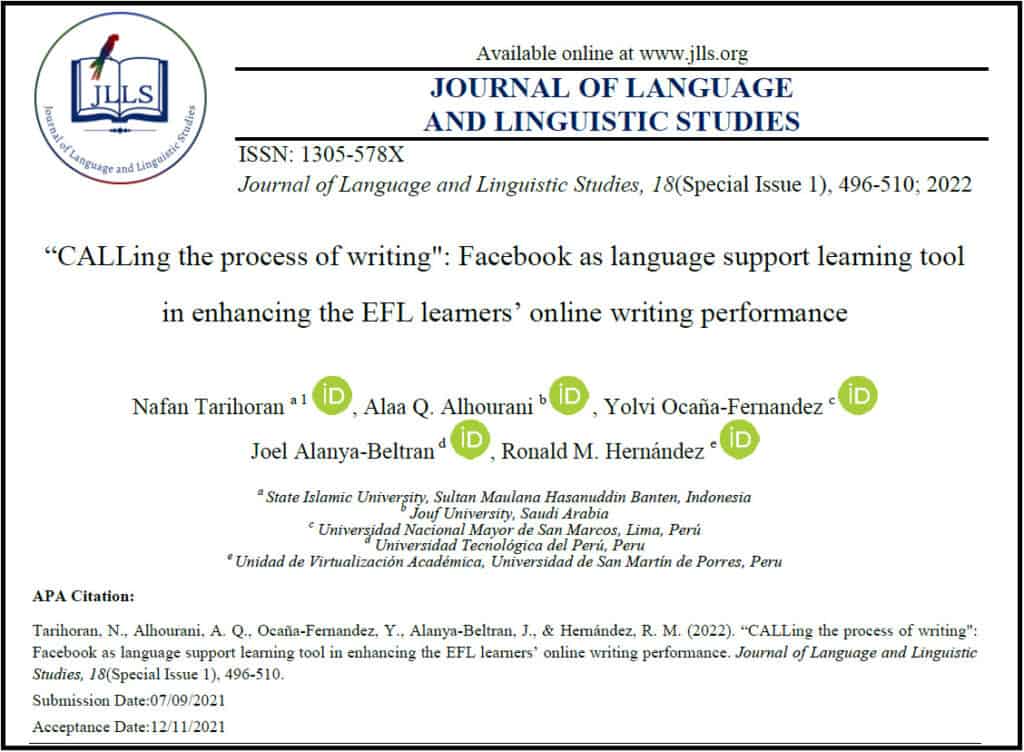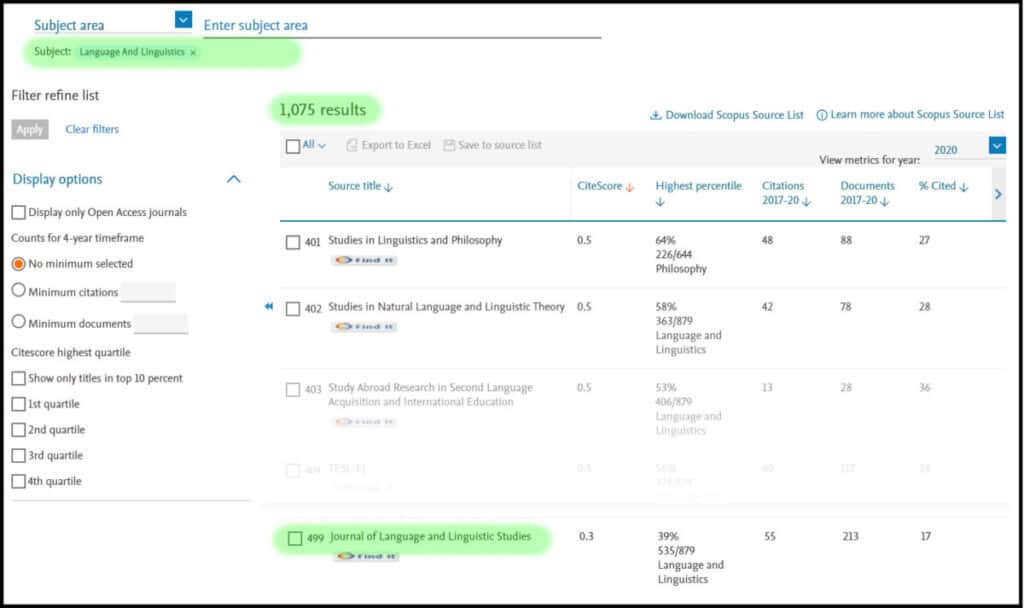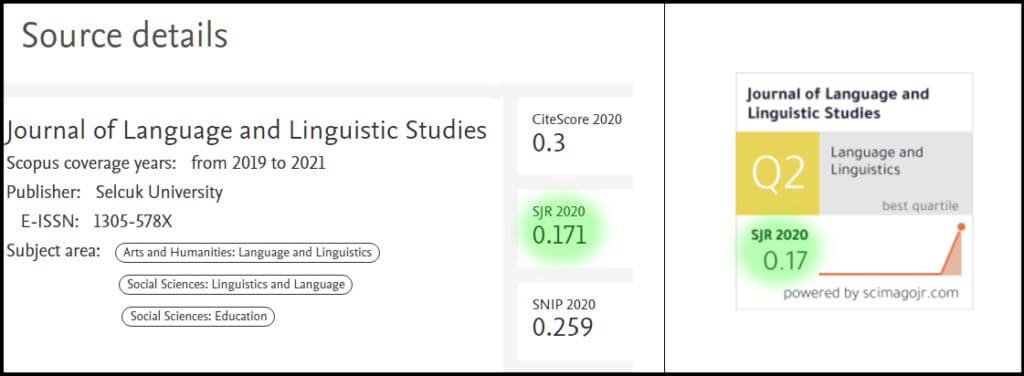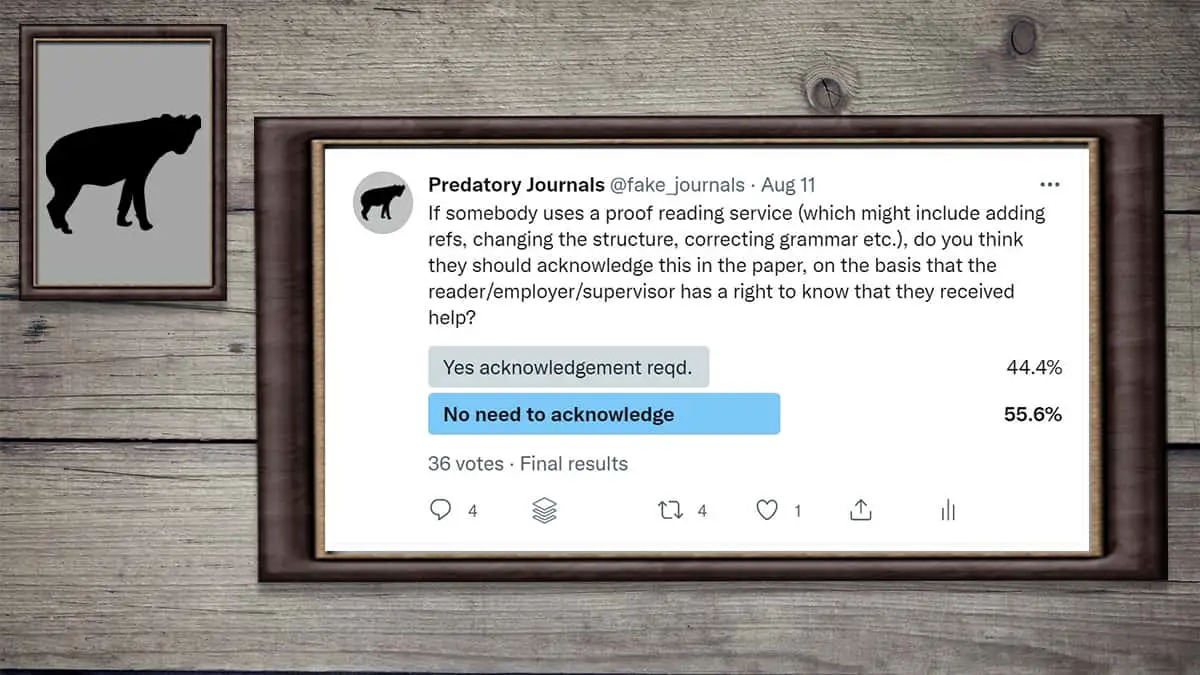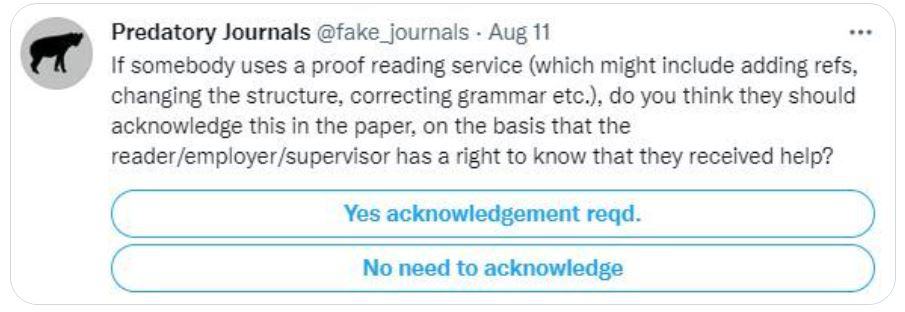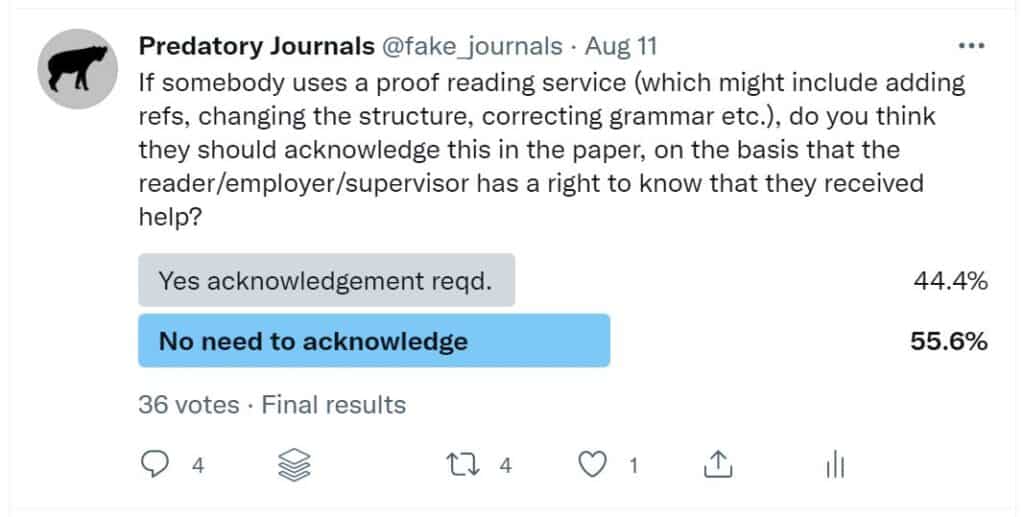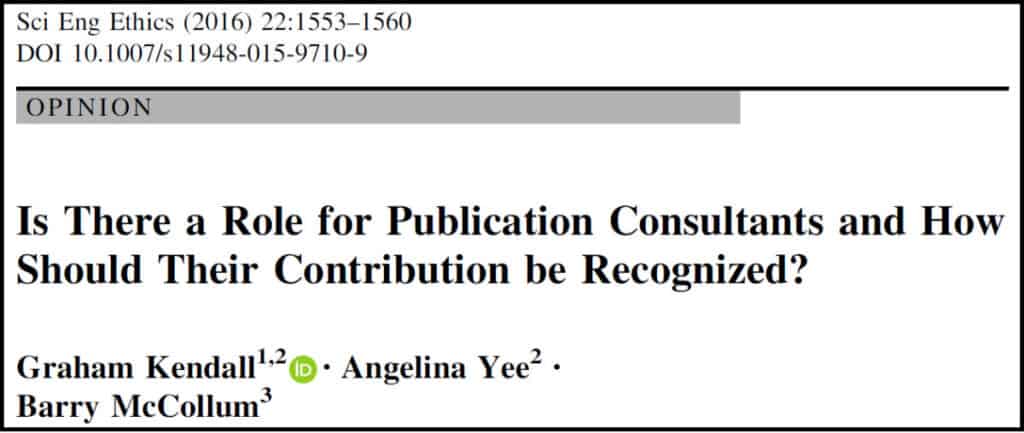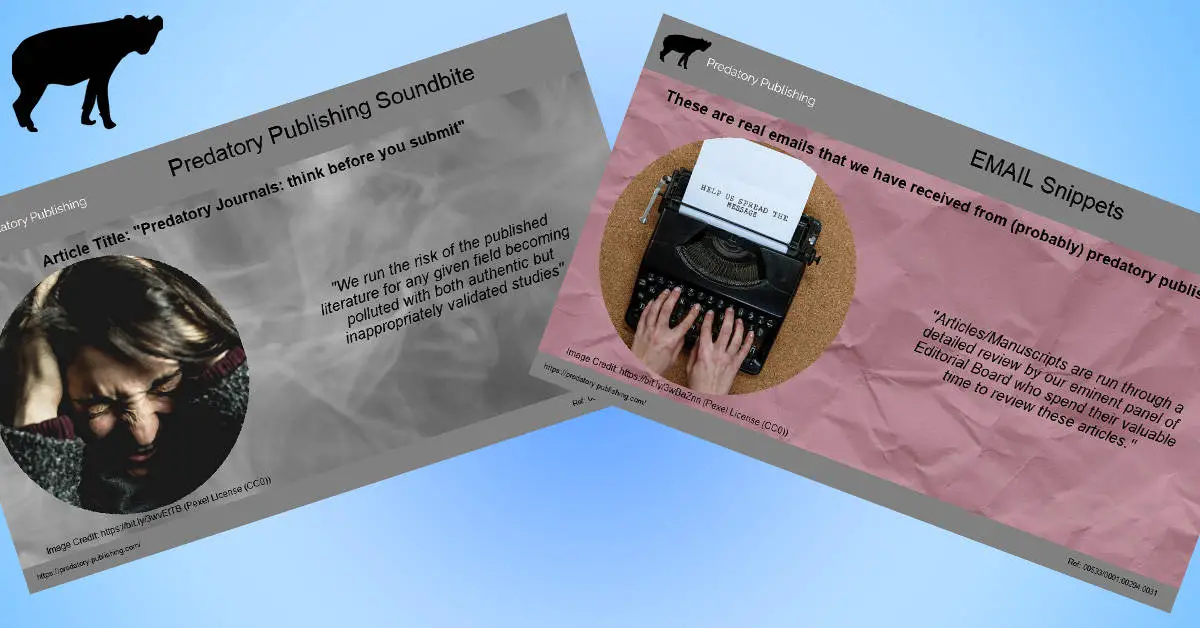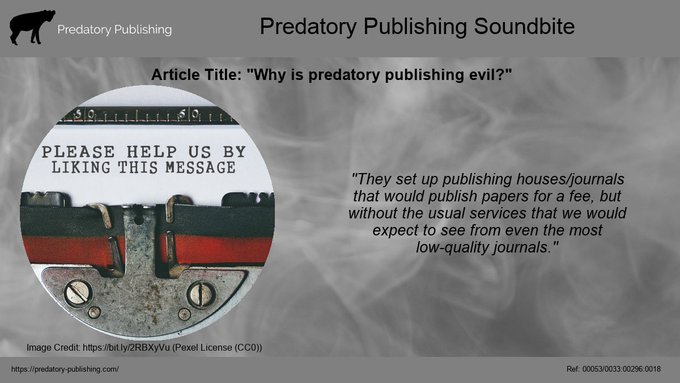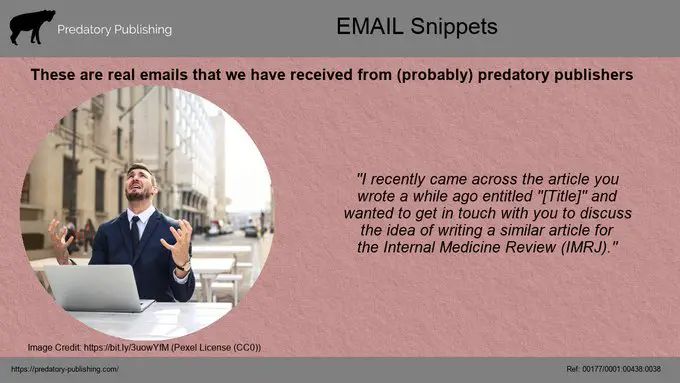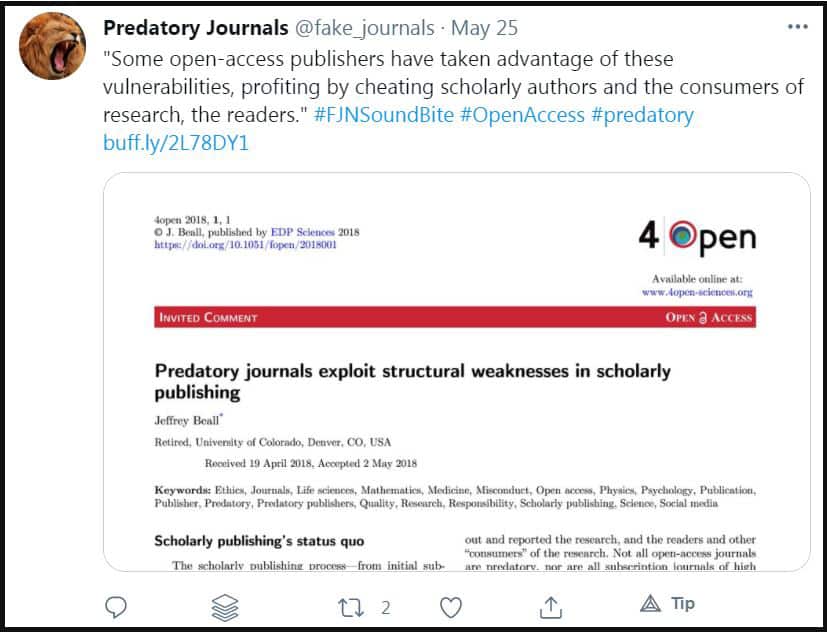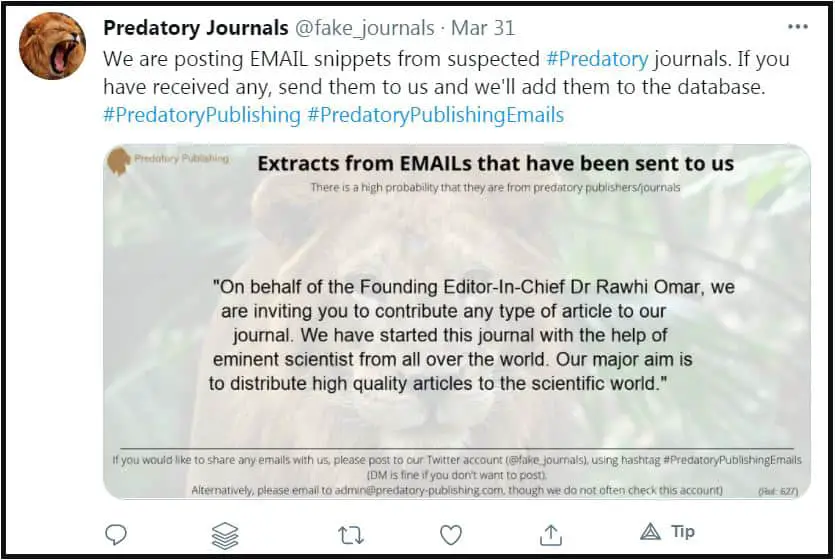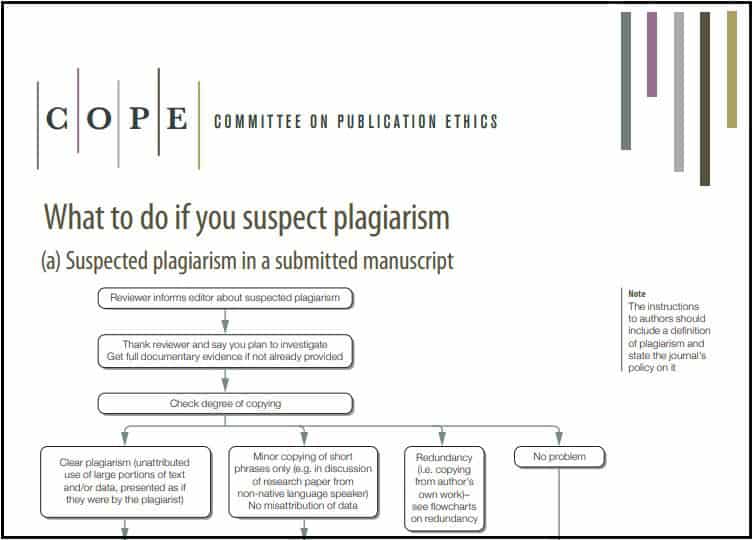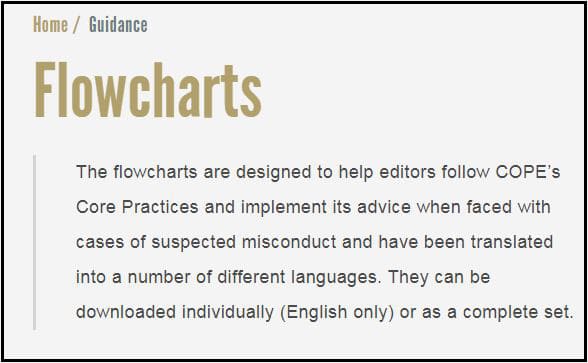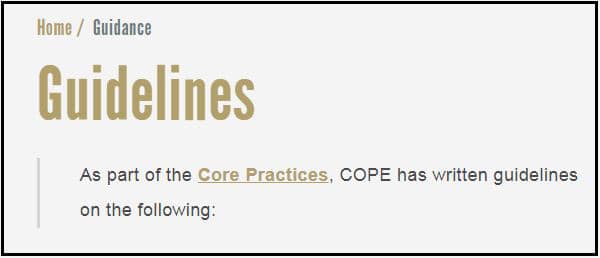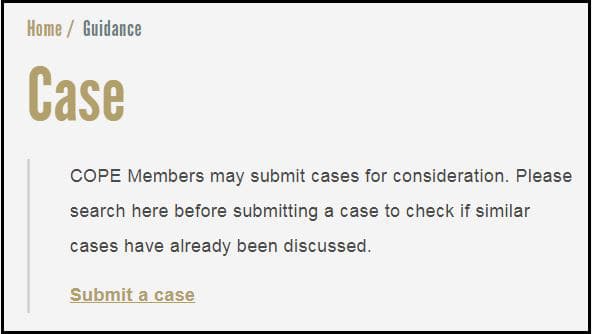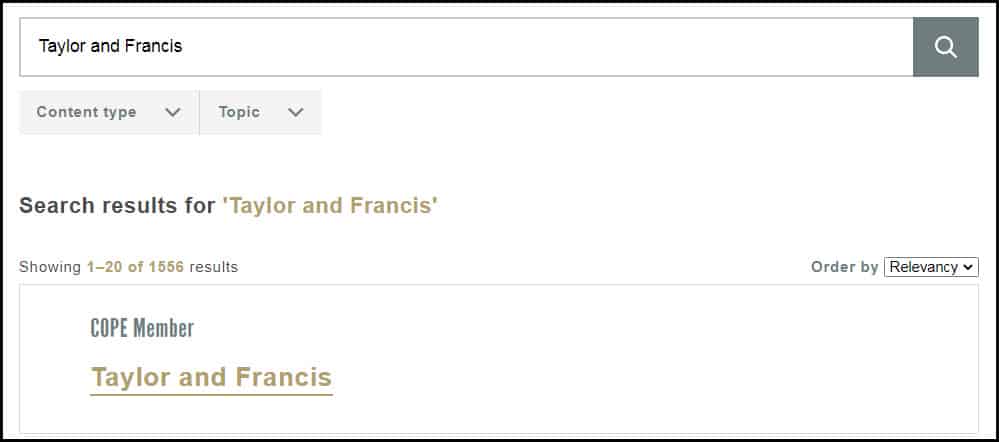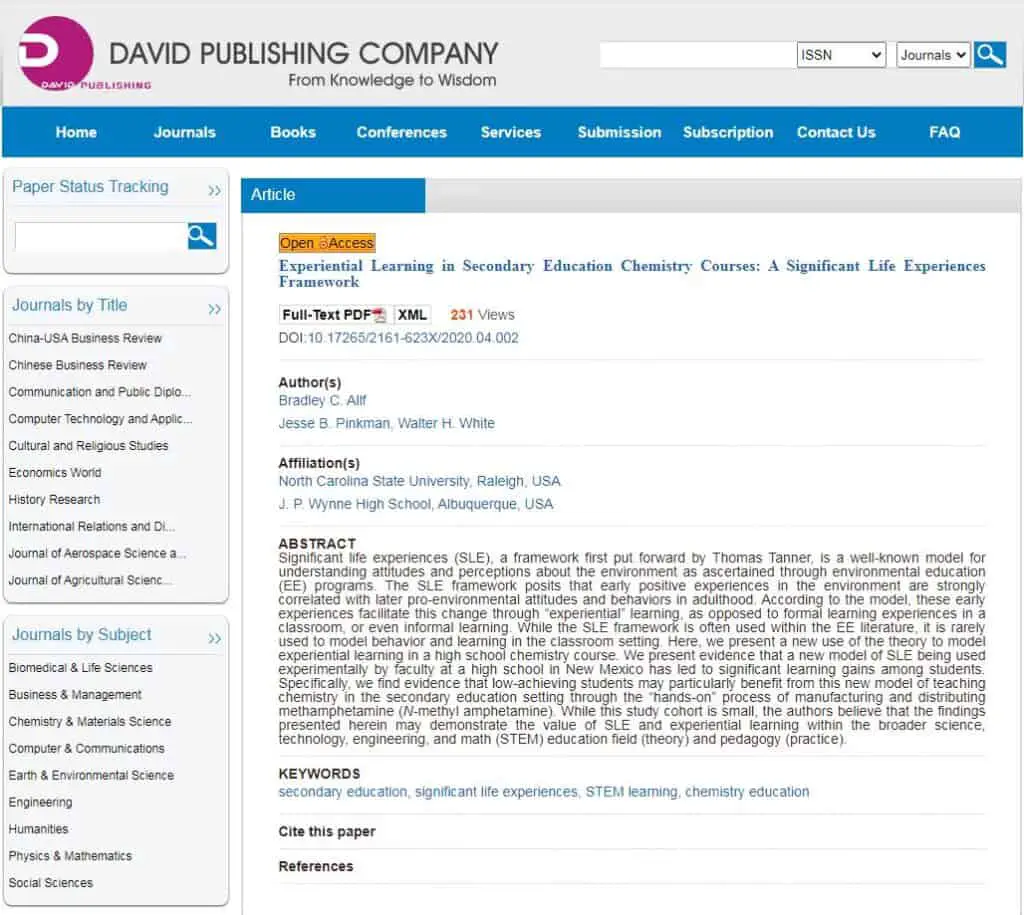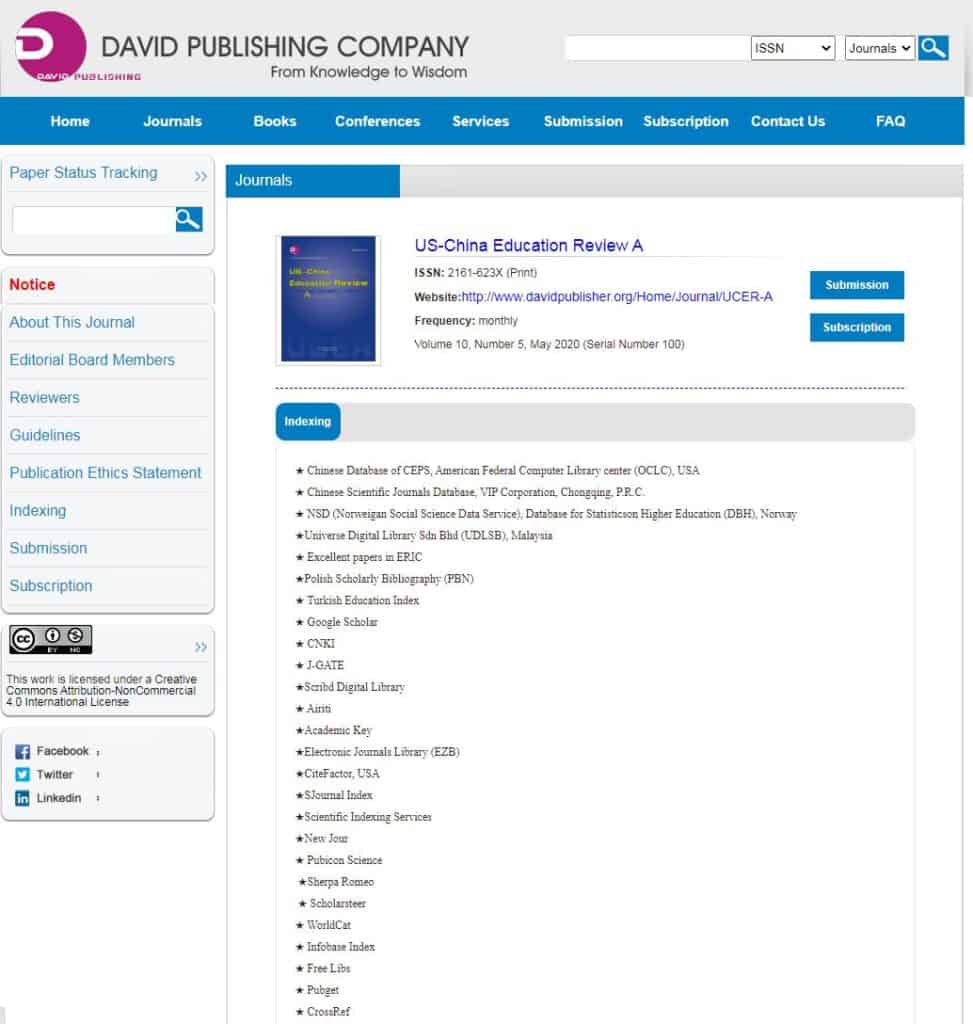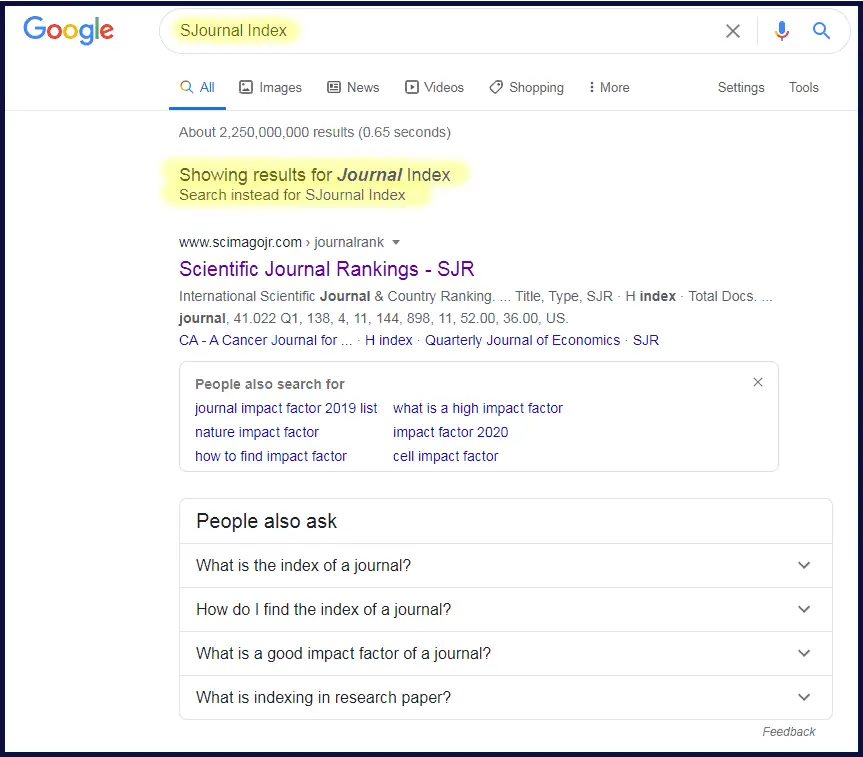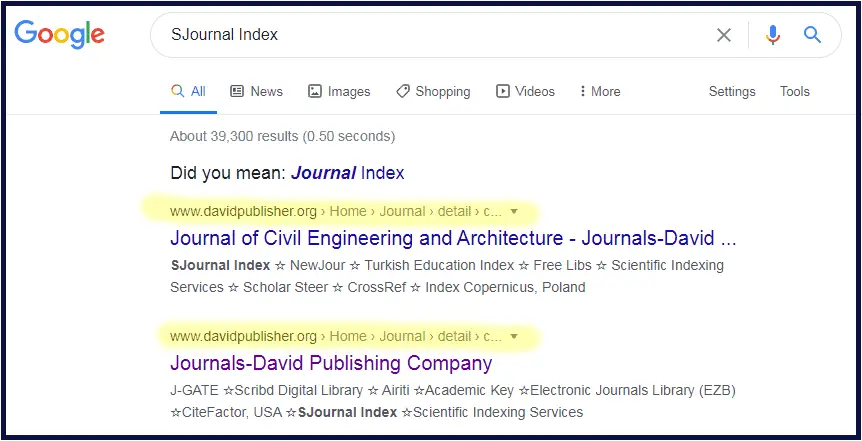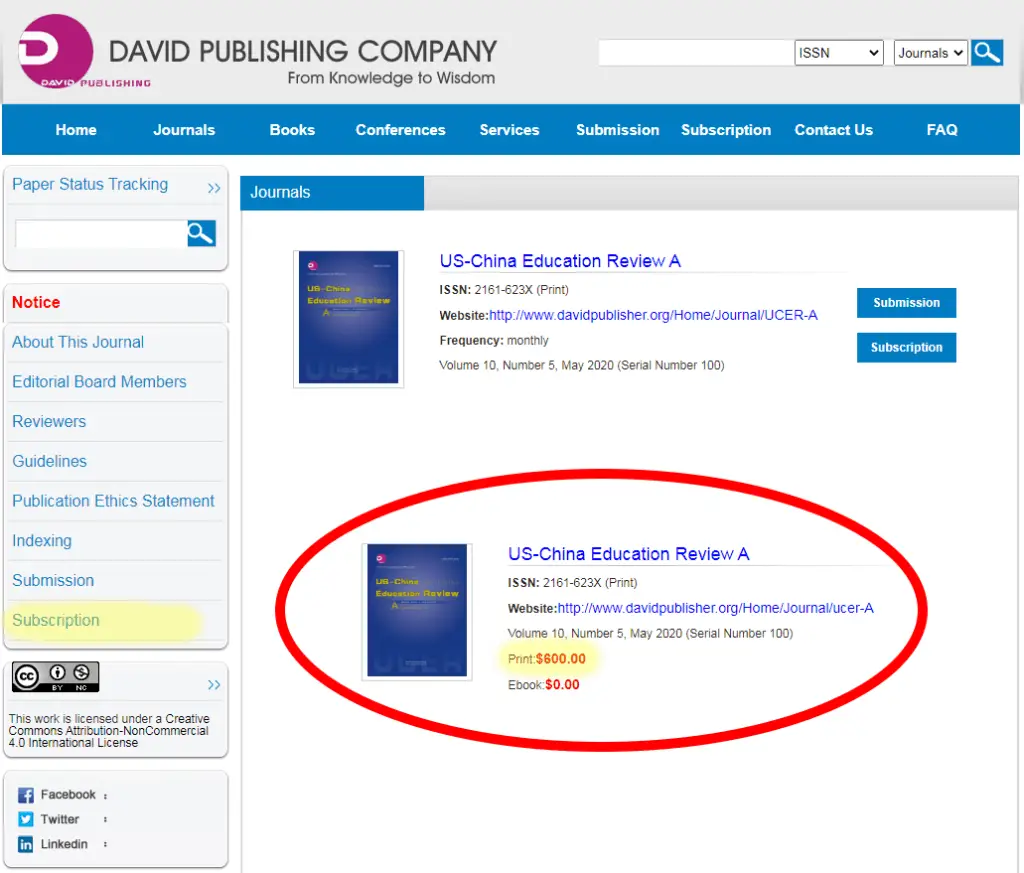In a previous article we have looked at “Sting operations in predatory publishing“, where we described several sting operations that had targeted predatory journals and conferences. In this article we look at the case where a journal published a spoof Covid-19 paper.
“Cyllage City COVID-19 Outbreak Linked to Zubat Consumption” is a spoof paper that was accepted and published in a peer reviewed journal. The paper even contained the sentence “Epidemiologists believe it highly likely that a journal publishing this paper does not practice peer review and must therefore be predatory”.
It is apparent that there was no peer review, even though the correspondence from the journal suggested that there had been.
The article that was accepted in a predatory journal
The paper, titled “Cyllage City COVID-19 Outbreak Linked to Zubat Consumption” was published in the “American Journal of Biomedical Science & Research“. The paper is a spoof paper and the journal, by extension, is predatory.
The full citation of the paper is:
- Utsugi Elm, Nasu Joy, Gregory House and Mattan Schlomi (2020) Cyllage City COVID-19 Outbreak Linked to Zubat Consumption. American Journal of Biomedical Science & Research 8(2). AJBSR.MS.ID.001256. DOI: 10.34297/AJBSR.2020.08.001256
The timescale, from submission to publication
The paper was was received on 14 March 2020 and published on the 18 March 2020.
The fact that the paper was published within four days is a worrying sign. You have to ask yourself how any paper can be received, be peer reviewed and then published within four days? We assume that no corrections were required.
The acceptance email
The author makes the email trail available here, and we show the actual acceptance in Figure 1.
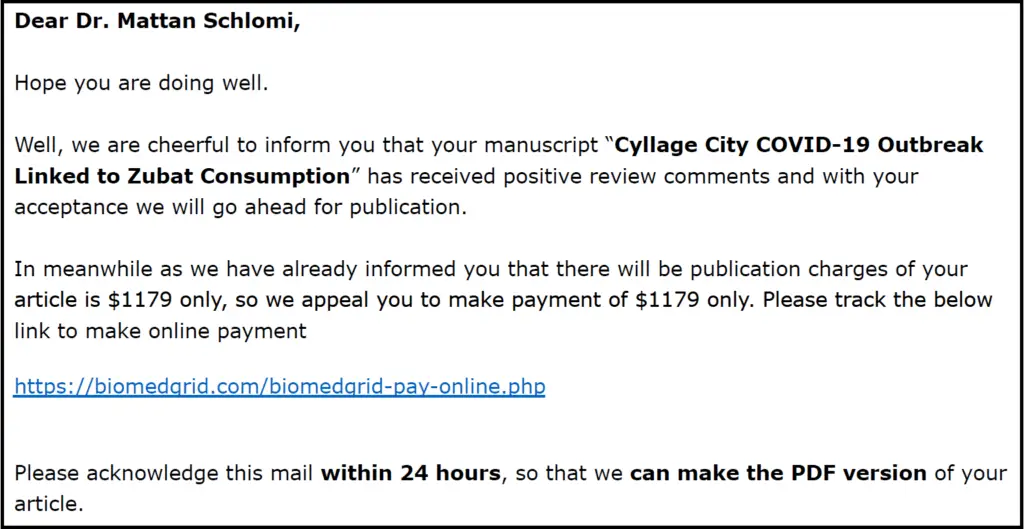
We note that the email says that the paper “has received positive comments.” We wonder whether these were ever passed to the author and what they actually said?
Cited papers
“Cyllage City COVID-19 Outbreak Linked to Zubat Consumption” cites 42 papers. Some of these are are genuine papers, in that they exist, but many are fictional, which are humorous in the titles/authors. Many of the genuine cited papers are drawn from the predatory publishing literature, which have nothing to do with the subject of the paper.
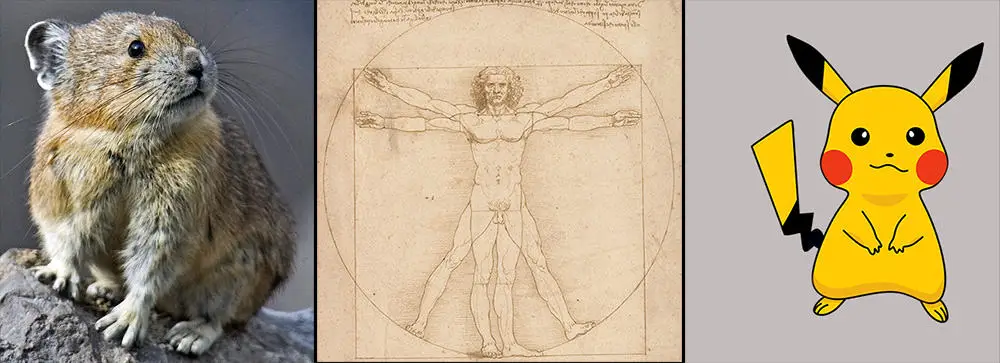
- One of the papers that is cited is:
Wayne B (2016) Phobia of Bats and Its Applications in Criminal Justice. Gotham Forensics Quarterly 26(8): 807-81
If you only have a passing knowledge of Batman, you will know that Bruce Wayne is the secret identify of Batman. Moreover, Gotham Forensics Quarterly is a fictitious journal, noting that Gotham is where Batman and Bruce Wayne live. - Three papers with reference to Jeffrey Beall (one of the first people to look at predatory publishing) are cited:
- Beall J (2016) Dangerous predatory publishers threaten medical research. Journal of Korean Medical Science 31(10): 1511-1513. DOI: 10.3346/jkms.2016.31.10.1511.
This paper is a genuine paper, but it is referenced in connection to “pikas”, which is a small, mountain-dwelling mammal found in Asia and North America. The Beall paper certainly has nothing to do with pikas but rather, as the title suggests, the paper is about predatory publishers. - Strielkowski W (2017) Predatory journals: Beall’s List is missed. Nature 544(7651): 416: DOI: 10.1038/544416b
This paper is a genuine paper but it is referenced in connection with “sentrets”, which is a small Pokémon character covered in brown fur. Strielkowski’s paper does not mention Pokémon, but is purely focused on predatory journals. - Beall J (2016) Essential information about predatory publishers and journals. International Higher Education 86: 2-3. DOI: 10.6017/ihe.2016.86.9358
This is a genuine paper, but is referenced after the following sentence “To this literature we add a report from Cyllage City in the Kalos region, France, where an outbreak of the densely populated metropolis has to date produced 420 confirmed infections with seven deaths, all in the elderly and those with pre-existing conditions“. Beall’s article certainly has nothing to say on this topic.
- Beall J (2016) Dangerous predatory publishers threaten medical research. Journal of Korean Medical Science 31(10): 1511-1513. DOI: 10.3346/jkms.2016.31.10.1511.
- There are another three papers that cite work on predatory publishers/journals:
- Winnfield J, Vega V (1994) What do they call a predatory journal in France? Pulp Nonfiction 521: 154
This is not a genuine paper. The Pulp Nonfiction and the authors are references to characters in the film Pulp Fiction (Jules Winnfield and Vincent Vega). - Stromberg J (2014) ‘Get Me Off Your F*^@ing Mailing List’ is an Actual Science Paper Accepted by a Journal. Vox 21: 10-11
This blog post tells the story of another sting operation, where a conference accepted a paper with the title “Get Me Off Your F*^@ing Mailing List“, and just repeats that phrase over and over again.
We have written our own article that discusses this sting operation. - Laine C, Winker MA (2017) Identifying predatory or pseudo-journals. Biochemia medica: Biochemia Medica 27(2): 285-291 DOI: 10.11613/BM.2017.031
This is a genuine paper, that looks at how to identify predatory journals. In the paper it is cited in the context of “Most outbreaks of COVID-19 outside China have been traced to travellers from Wuhan or those who came in contact with them.” If you search through the paper, there is no mention of COVID or Wuhan. Indeed, as the paper was published in 2017, this was long before the COVID-19 outbreak in Wuhan.
- Winnfield J, Vega V (1994) What do they call a predatory journal in France? Pulp Nonfiction 521: 154
- There are many other papers, which bring a smile to your face, such as papers written by Winne the Pooh and A.A Milne, a paper written by George Orwell in 1984 and a paper co-authored by Leonardo de Vinci with the title “Effects of exposure to sewage on martial arts skills in turtles.“
Please take a look at the references, as there are many that are not genuine papers, but they are comic genius.
Statements that the journal is predatory
“Cyllage City COVID-19 Outbreak Linked to Zubat Consumption” has a statement within the paper that explicitly says any journal that publishes this paper does not carry out per review and that the journal must, therefore, be predatory.
In the paper, the following statement is made:
“Epidemiologists believe it highly likely that a journal publishing this paper does not practice peer review and must therefore be predatory.“
Publication Ethics
The American Journal of Biomedical Science & Research has a web page that defines its publication Ethics. On that page it mentions COPE (Committee on Publication Ethics) five times, yet the journal is not a member of COPE.
If you look at the journal’s web page on publication ethics (see Figure 3) you will see that COPE (Committee on Publication Ethics) is mentioned five times.
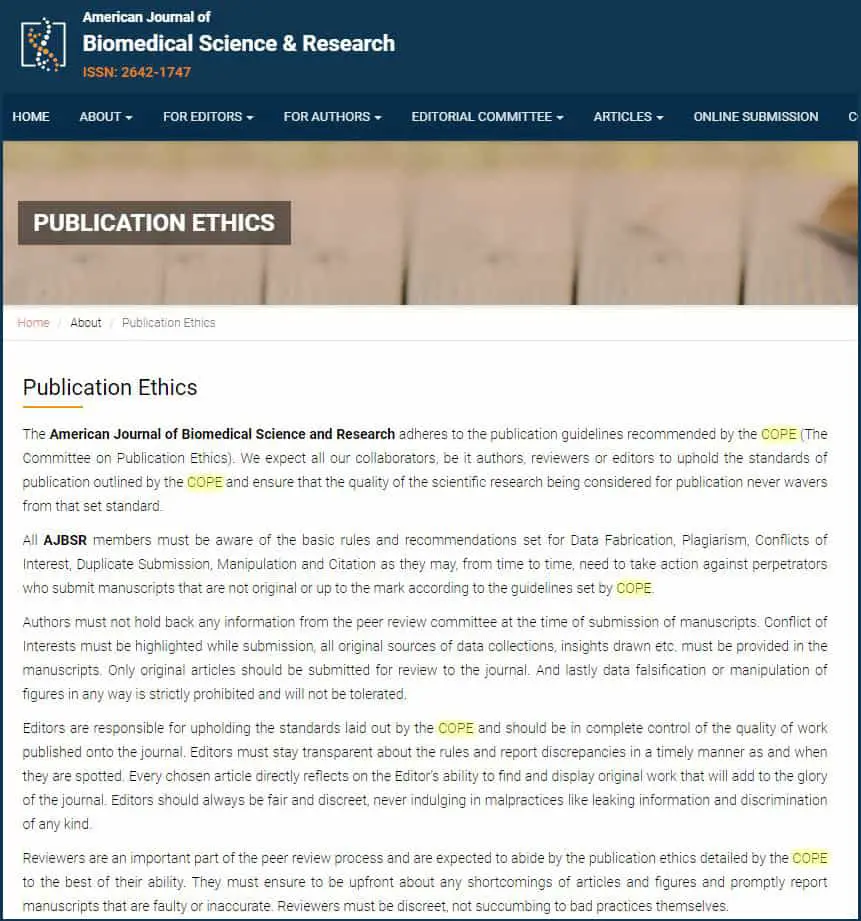
If you check the COPE web site, you’ll find that the journal is not a member of COPE. Not that the journal claims to be a member, but mentioning COPE five times might suggest to the unwary reader that the journal is a member.
Papers that cite this paper
If we accept that the American Journal of Biomedical Science and Research is predatory and that the article “Cyllage City COVID-19 Outbreak Linked to Zubat Consumption” should never have been published, it might be worrying that the paper gets cited. Yet it has been cited.
This article we are focusing on in this article was published in March 2020, and it was cited in May 2020 in the following article:
- Marzouk Lajili (2020) The COVID-19 Outbreak’s Multiple Effects. International Journal of Engineering Research & Technology (IJERT) 9(5): 358-361. [link to article]
We had a brief look at the International Journal of Engineering Research & Technology. It deserves a closer look but we are concerned that this is also a predatory journal. To give just one example why we suspect this, on their Publications Ethics Policy page (see Figure 4) it displays the COPE logo, but if you check on the COPE web site, this journal is not a member of COPE.
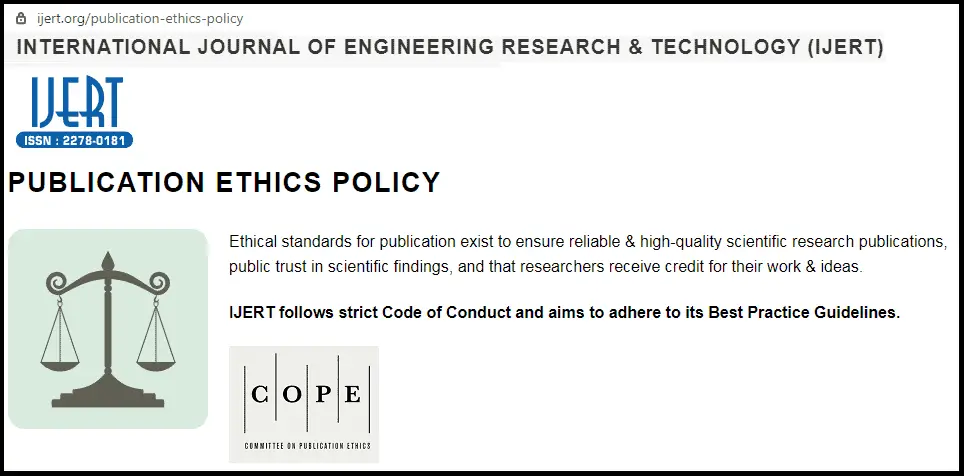
We have not carried out a full analysis of the International Journal of Engineering Research & Technology, so we cannot say definitely whether we believe it is a predatory journal, but if you are planning to submit to this journal, we would advise you to carry out your own checks.
The journal
The paper that is the focus of this article was submitted to the American Journal of Biomedical Science and Research (ISSN: 2642-1747).
In this section, we briefly look at various aspects of the journal, just to give some additional information in addition to the journal article itself.
Article Processing Charges
Looking around the American Journal of Biomedical Science and Research web site we found that Article Processing Charges (APCs) are $1,179 or $1,479 (see Figure 5). This agrees with the amount requested to be paid by the author (see Figure 1).
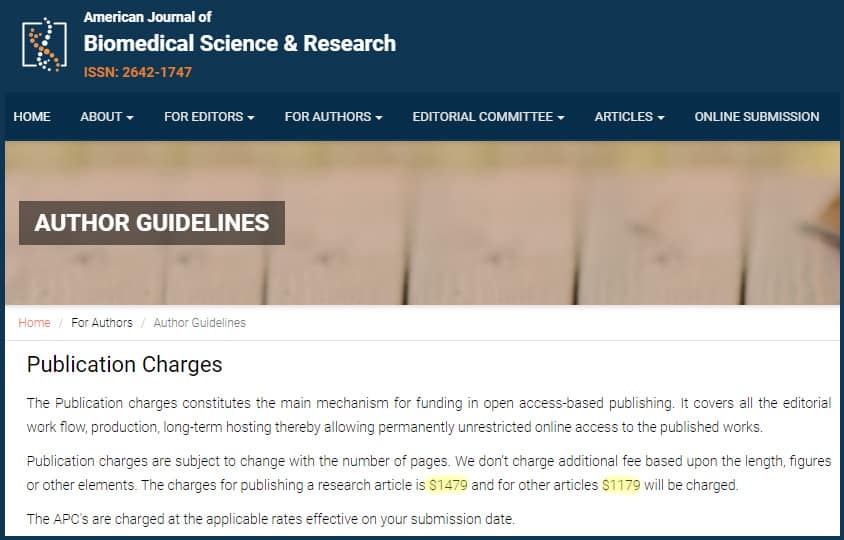
There was also some information in their FAQ about article processing charges (see Figure 6).
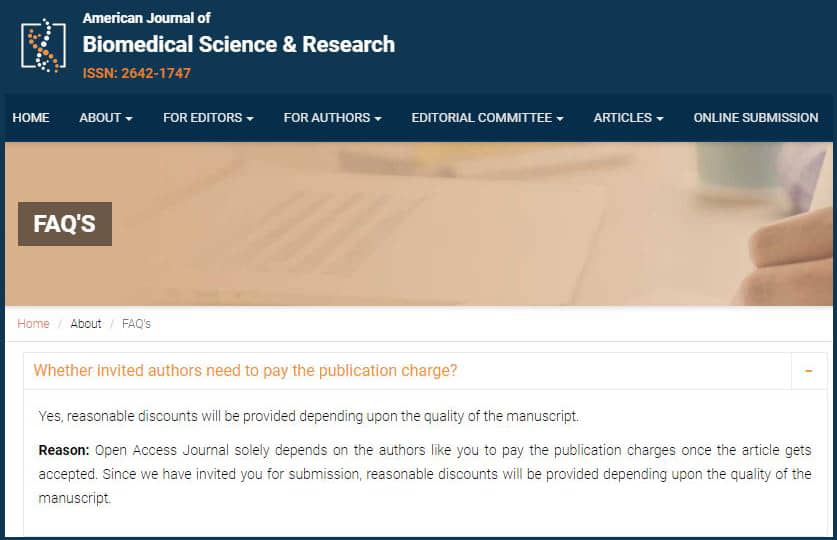
Impact Factor
If you look at the home page (see Figure 7) of the American Journal of Biomedical Science and Research, it states that it has an ISI impact factor of 0.823. This is NOT, as you might expect, a Clarivate Analytics Impact Factor, but an impact factor called International Scientific Indexing.

Figure 8 shows the web page that reports this impact factor.
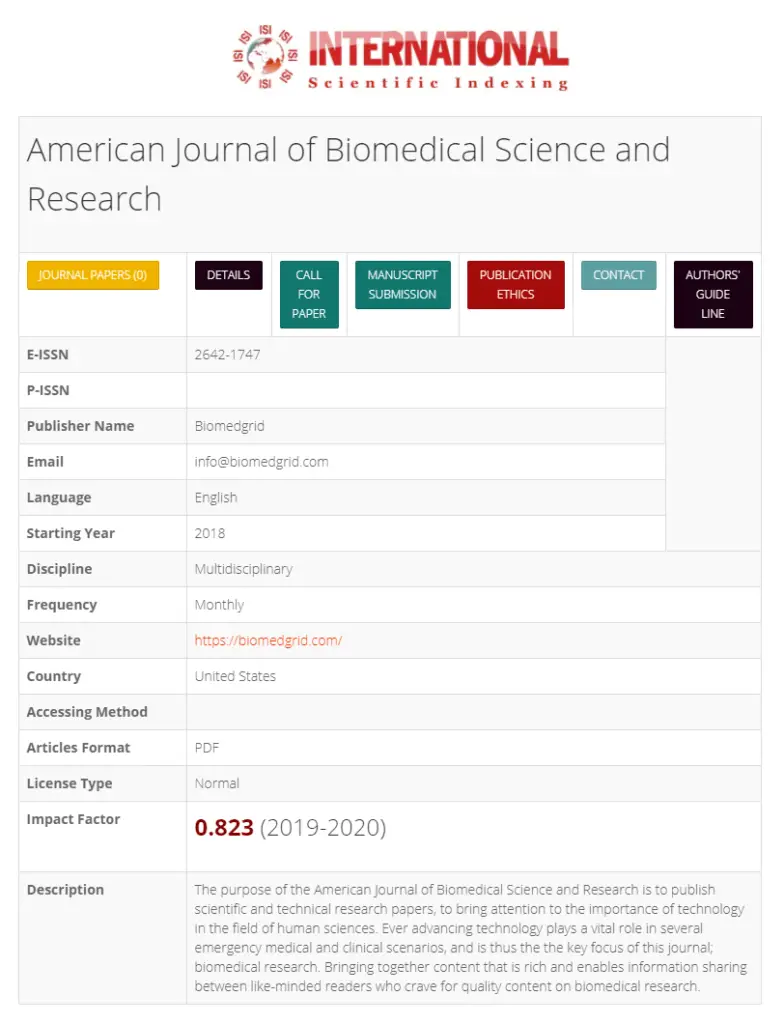
We have written another article which looks at the difference between the Clarivate ISI impact factor and the International Scientific Indexing impact factor. Strangely, though a complete coincidence, the journal that started the investigation into that article is the same one that we are focusing on in this article.
Article Availability
In an editor’s note to the The Scientist article that reports this sting operation, it is stated that “Editor’s Note (November 1, 2020) – The American Journal of Biomedical Science & Research has informed Shelomi that it will be removing the paper that serves as the subject of this piece as he has not paid the publication fees.“
The last time we checked (14 Nov 2020), the article was still accessible via the journal’s web site, via this link. https://dx.doi.org/10.34297/AJBSR.2020.08.001256. We are not sure how long this link will remain valid.
If/when this link does fail to work, we have saved a copy of the paper which you can download from here.
Article in The Scientist
The author of “Cyllage City COVID-19 Outbreak Linked to Zubat Consumption” has written an article in The Scientist called “Opinion: Using Pokémon to Detect Scientific Misinformation” which describes the sting operation that was mounted against the American Journal of Biomedical Science & Research.
We drew heavily on that article, as you might imagine, but we also delved a little deeper to look at the article and the journal in more detail.
Conclusion
Most (sensible) scholars would agree that predatory journals and publishers are problematic for many reasons, many of which we explore in other articles (see the list of articles below). We summarize below some of the issues posed by predatory journals/publishers.
- Nothing in the paper we focus on in this article, has any scientific credibility, yet some people might believe some of the statements that are made in the paper.
- The paper under investigation has been published in a peer reviewed scientific journal, or at least readers may believe that the paper has been peer reviewed, thus making the assumption that the claims made must have been validated by experts in the field. It has been stated that the paper we are focusing on is a spoof paper, but what about other papers that are not spoof, yet the research has not been peer reviewed?
- The paper we focus on has already been cited by another paper. In this case, we believe that the article that is citing the paper is also published in a predatory journal, but the citation could easily have been made from within a respectable journal. This would give some credibility to the paper published in the predatory journal.
- If predatory papers are cited in the legitimate scientific archive, it will infect that archive and a logical conclusion is that we can no longer have faith in the scientific archive and it will fall into disrepute.
- Other researchers might take the “contribution” of papers published in predatory journals and use it as a basis for their own research, This is not only doomed to failure, but it also a waste of time and money and could be dangerous.
- If research that is based on a predatory journal article is funded by some agency, then that money is wasted. A lot of research is funded by governments, through the taxes that they generate. This is, in effect, stealing money from the man in the street.
- Predatory journals/articles can be dangerous, especially those that are related to health. The general public, or even medics, could take the information in the paper as true and use that to make, what could be, life changing decisions.
We conclude by saying that predatory journals/publishers are not wanted as part of the scientific archive but, more importantly, if we let them infect the scientific archive, predatory journals could be dangerous if others start to believe, and act on, the statements made in those papers.
You might also be interested in:
- Why do authors publish in predatory journals?
- Do predatory publishers respect the scientific archive?
- Sting operations in predatory publishing
- Why is predatory publishing evil?
- Will publishing in predatory journals harm your CV?
Image Acknowledgements
- Pika: Alan D. Wilson, CC BY-SA 3.0 https://creativecommons.org/licenses/by-sa/3.0, via Wikimedia Commons, https://commons.wikimedia.org/wiki/File:Pika_2.jpg. Image has been cropped
- Leonardo di Vinci: Leonardo da Vinci, CC BY-SA 4.0 https://creativecommons.org/licenses/by-sa/4.0, via Wikimedia Commons. https://commons.wikimedia.org/wiki/File:Leonardo_da_Vinci_-_Uomo_vitruviano.jpg. Image has been cropped
- Pokemon: https://pixabay.com/vectors/pokemon-pikachu-cute-character-5426712/
Article history
Where an article has been updated since first being written, we provide a history of the changes. Why? Why not :-).
- The original article was published on 14 November 2020.
- The article was updated on 29 July 2023. We removed profanities (at least, putting in special characters) we we felt that search engines did not like it. It was actual in the title of papers, so the profanities should have remained, but we felt it better to remove them.


